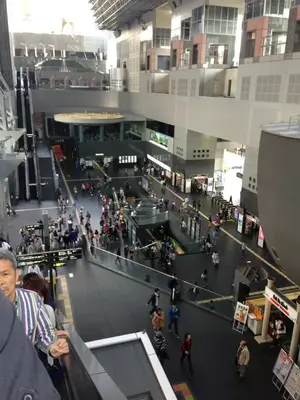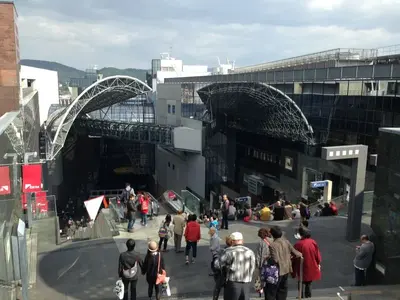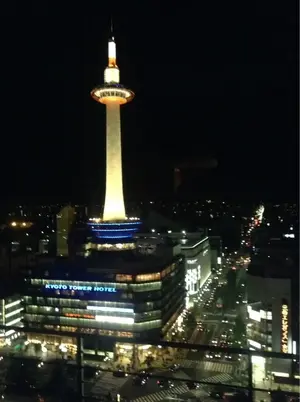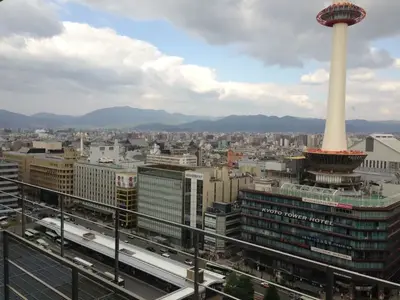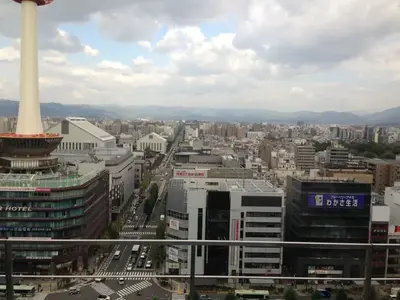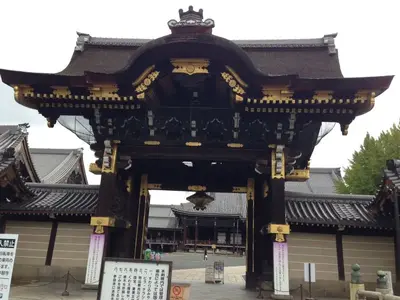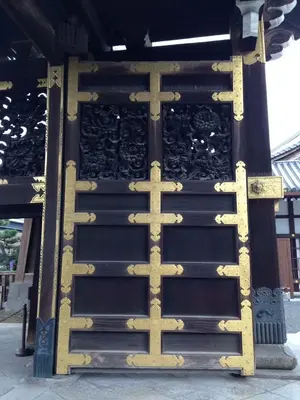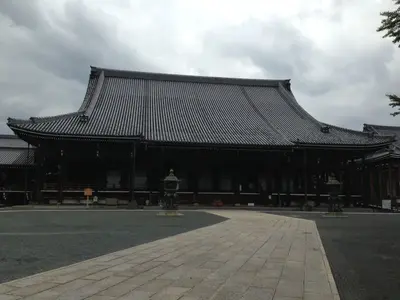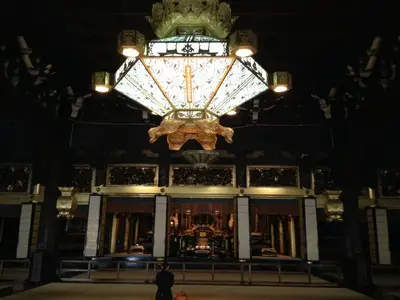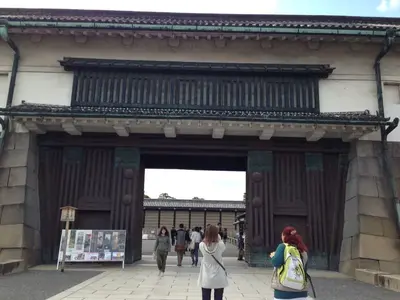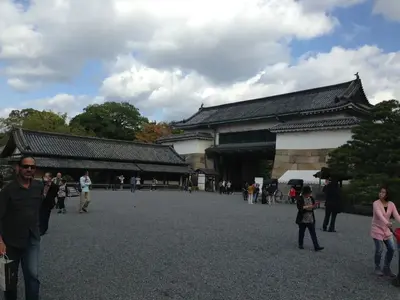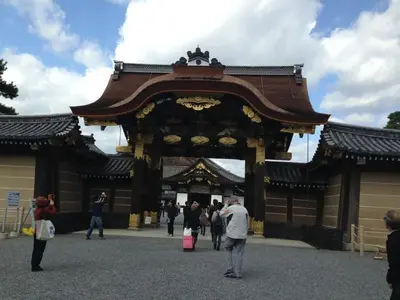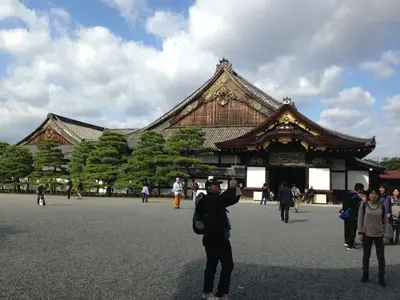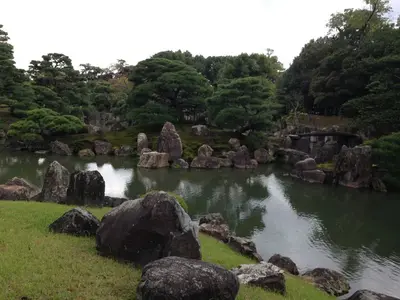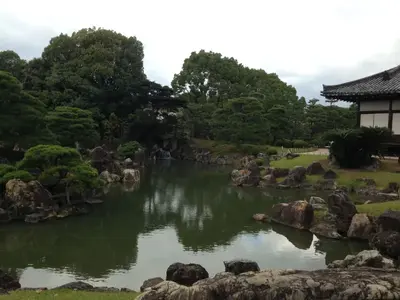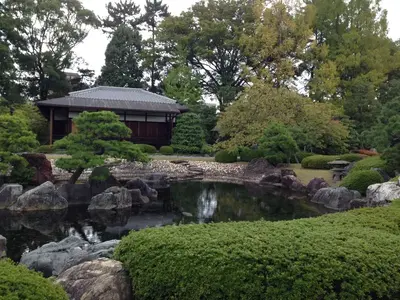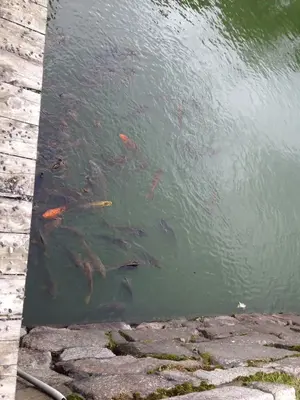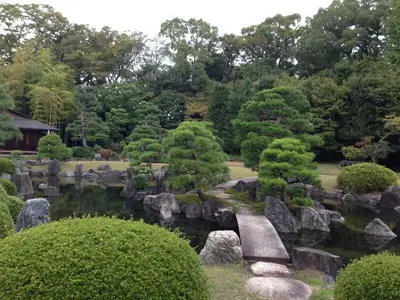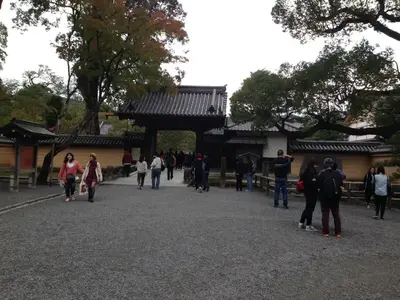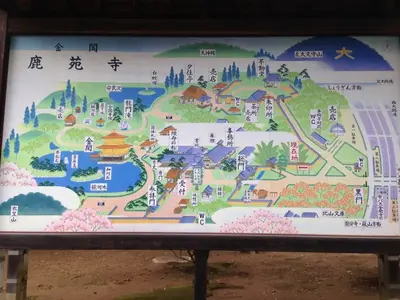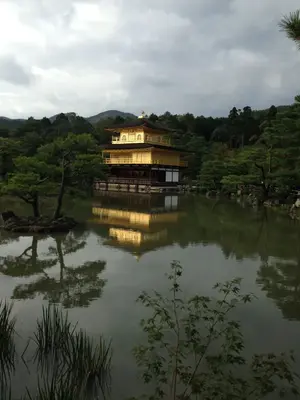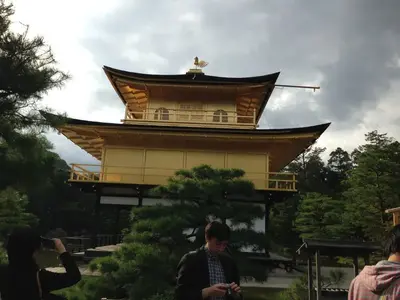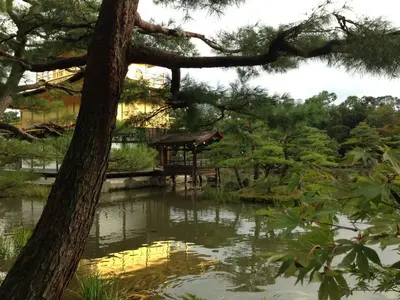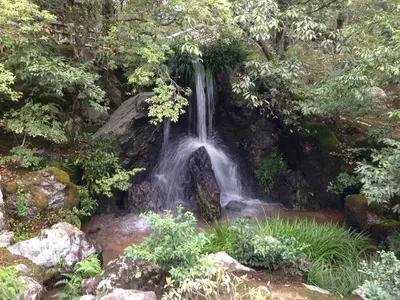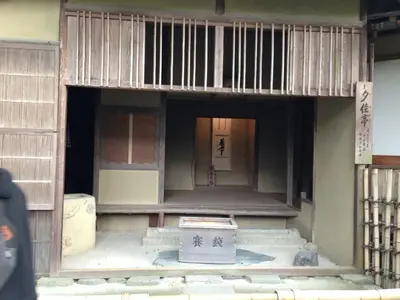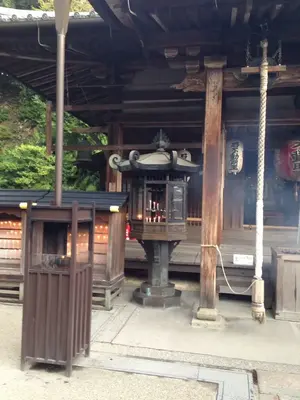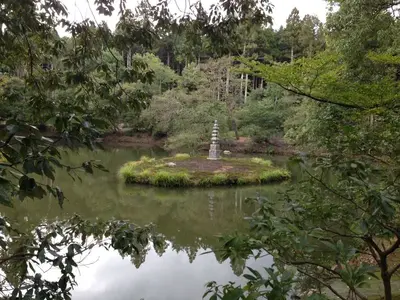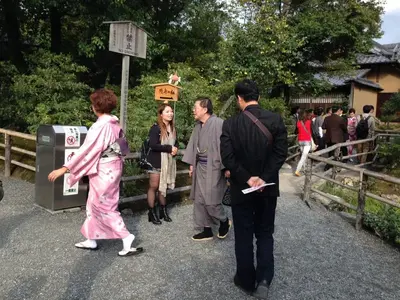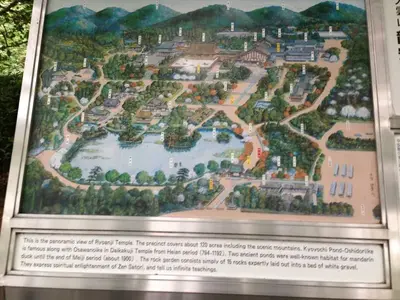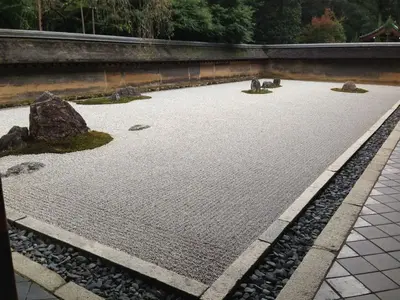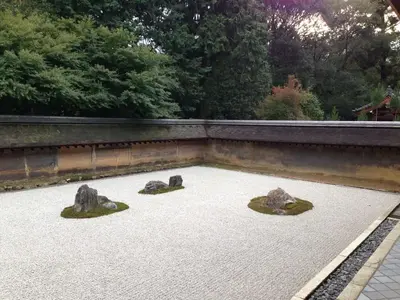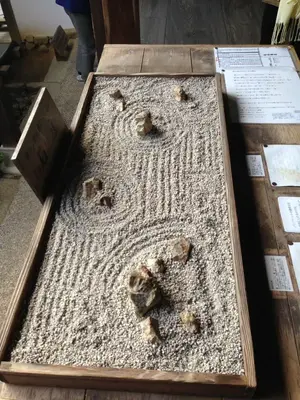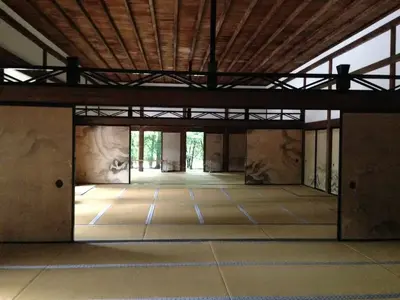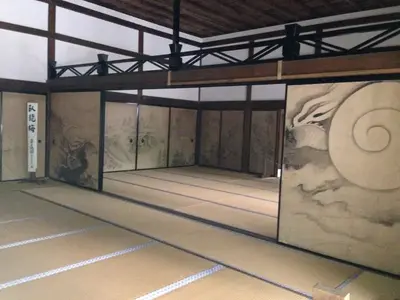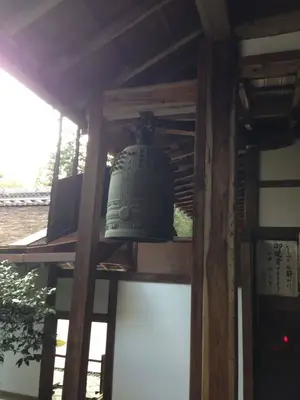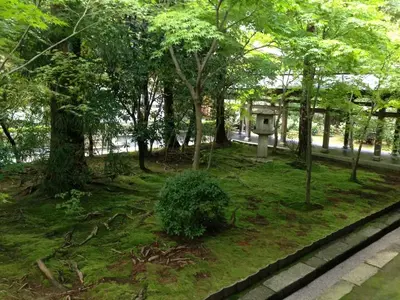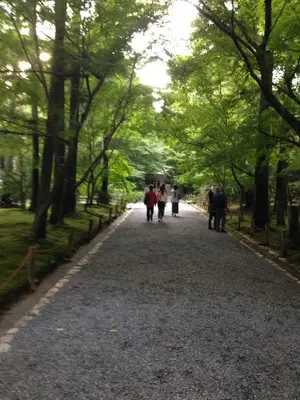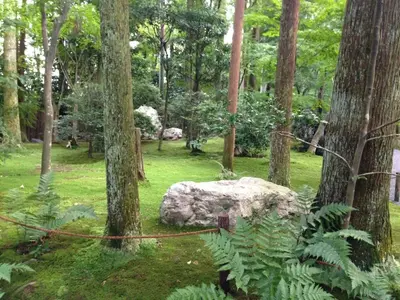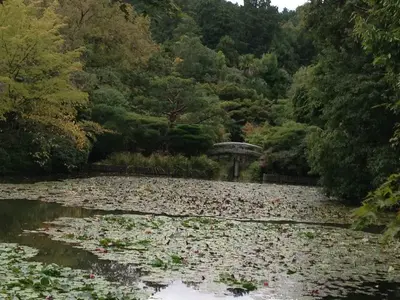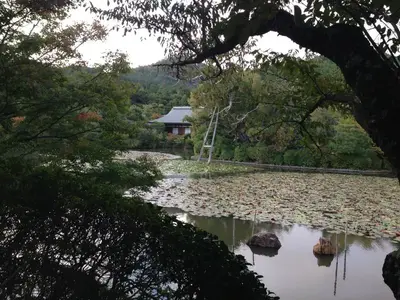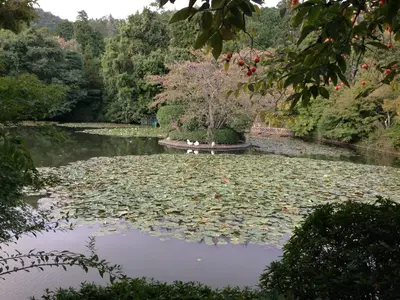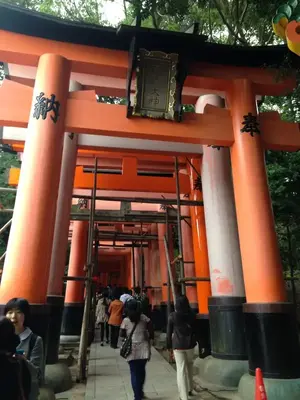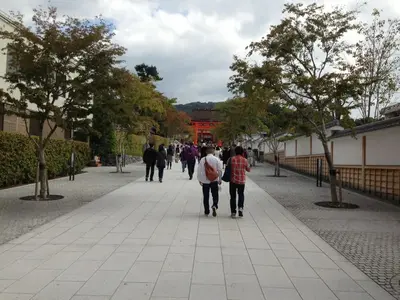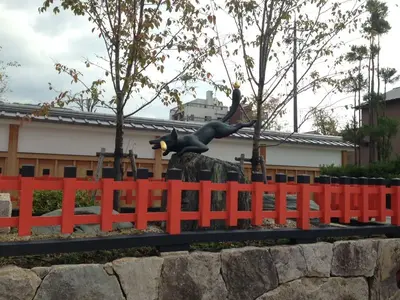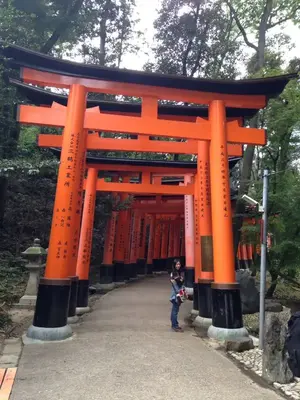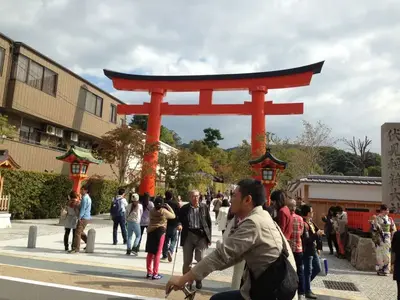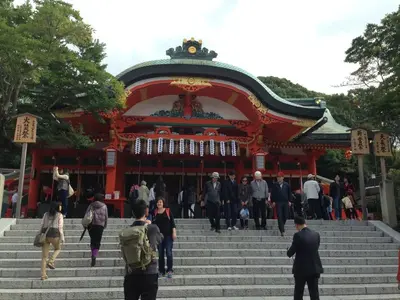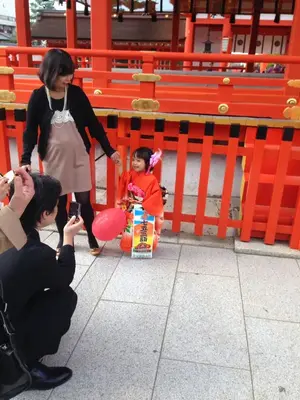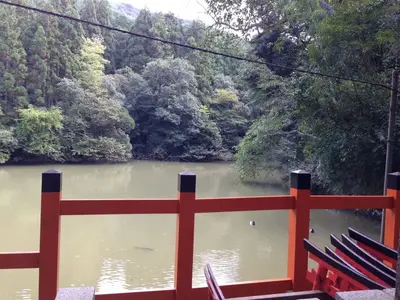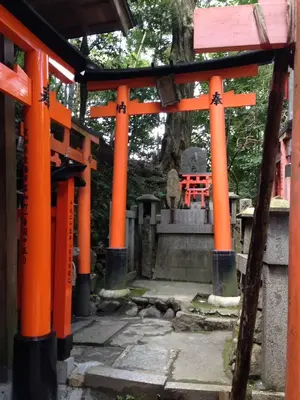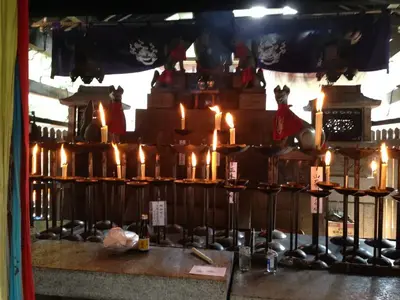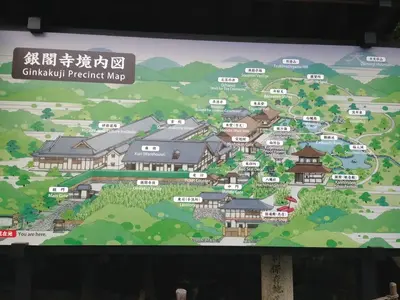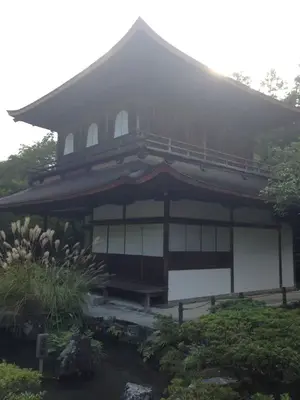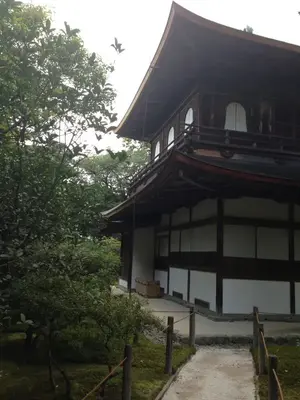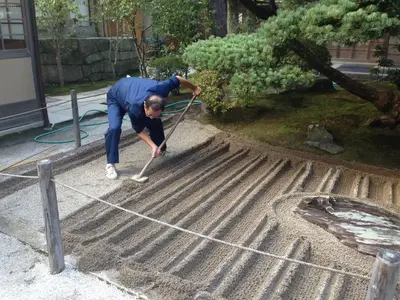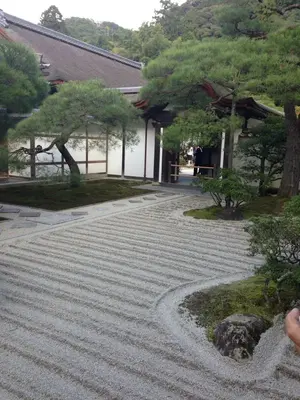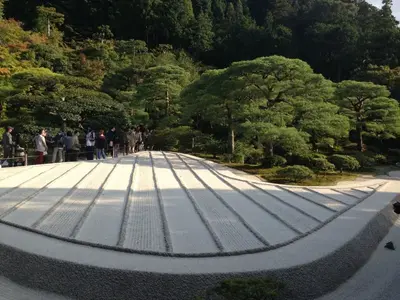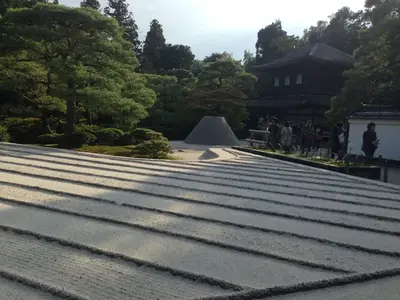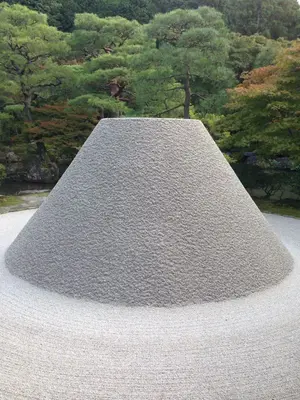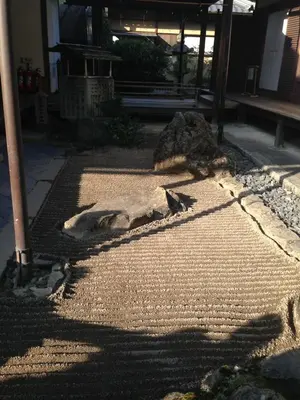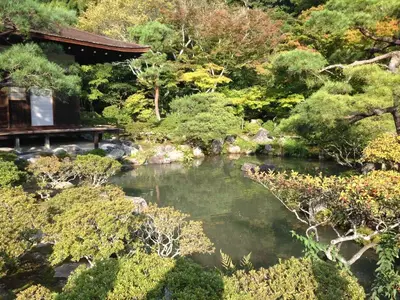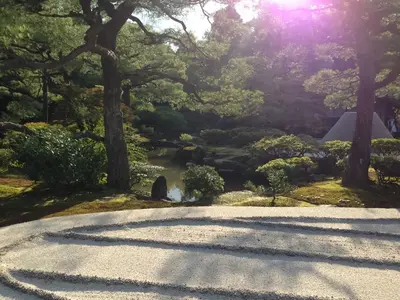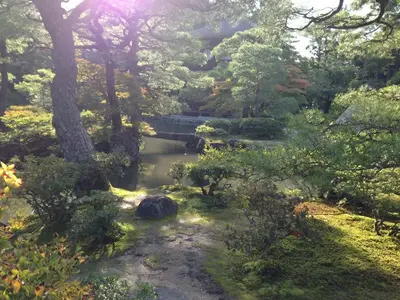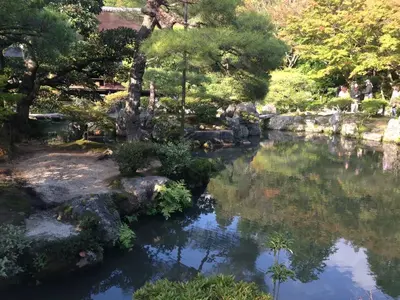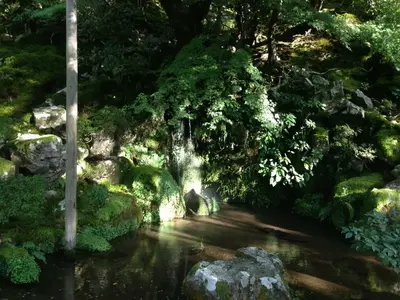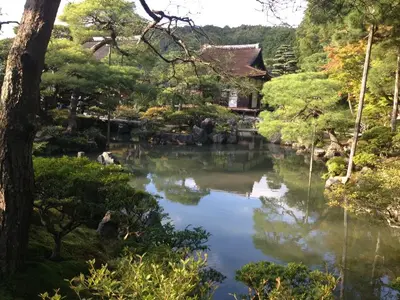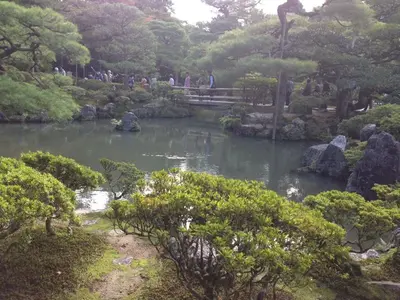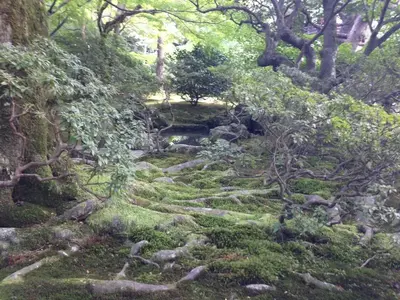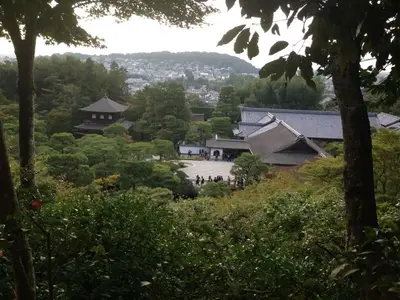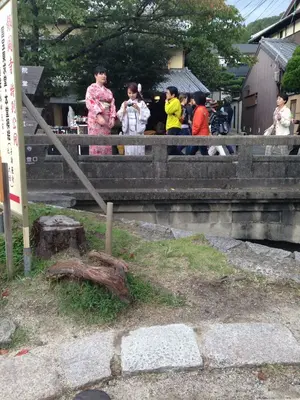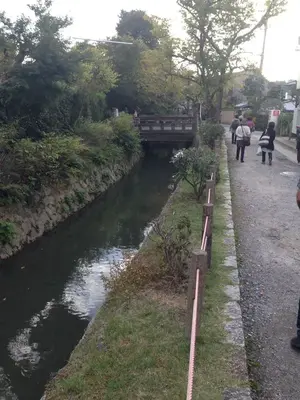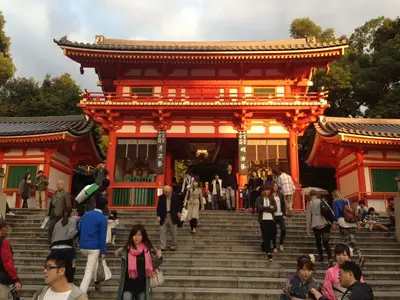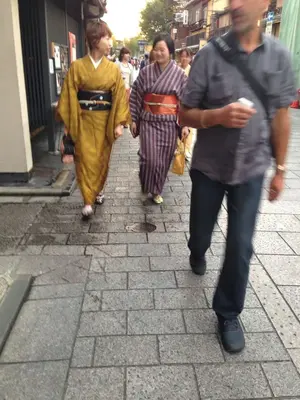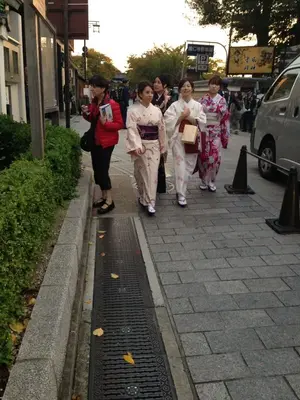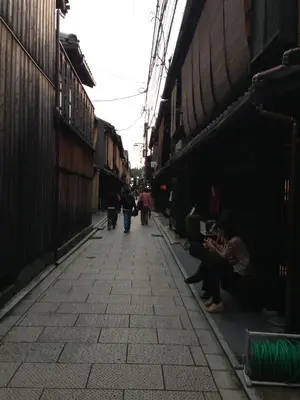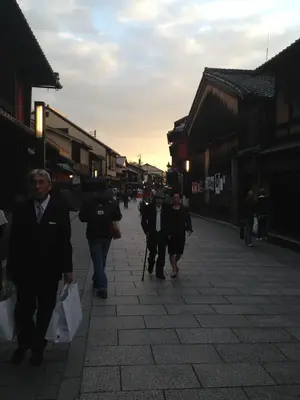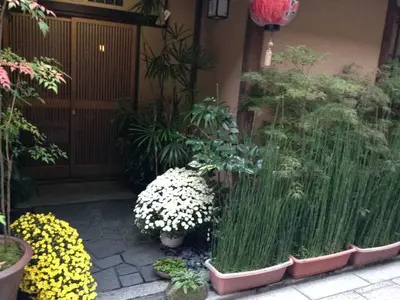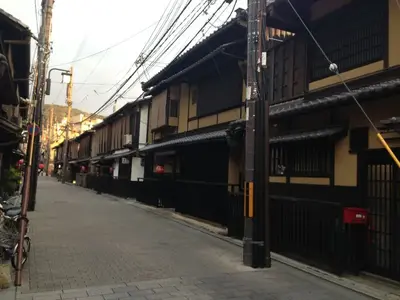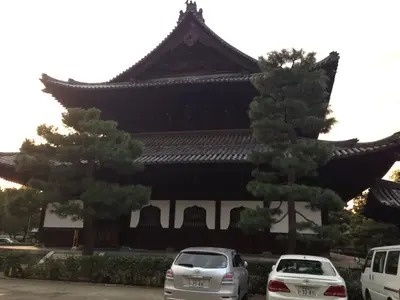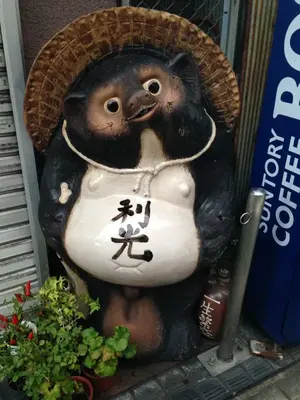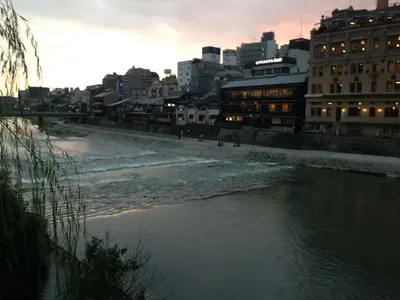Hiroshima
This city was a 'must see' for us, not that we have any personal reasons or connections but more to do with world history and what happened here. It also touched us in a very special way and we learnt here just how wonderful the people of Japan can be.
We again stayed close to the train station (across the street) at the Sheraton Hotel as we needed to leave very early and didn't want to waste precious time with more travelling to train stations.
Views over Hiroshima from our Hotel room
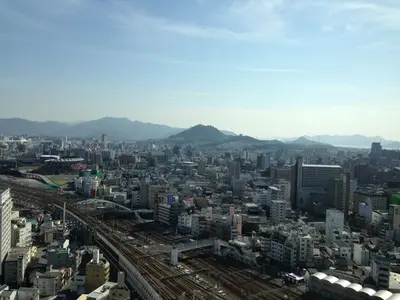
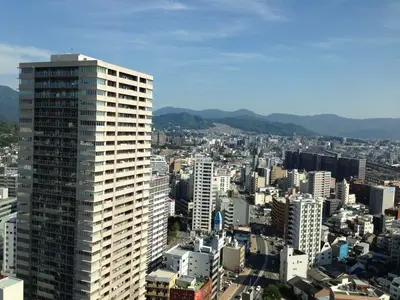
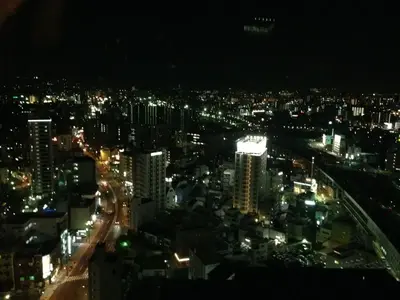
Right outside the Train station you will find a tram system which travels to many different areas of Hiroshima. It is from here that you can take a tram to the Hiroshima Peace Memorial Park. It's an approx 15 minute ride and the appropriate stop is only a short walk to the Atomic Bomb Dome.
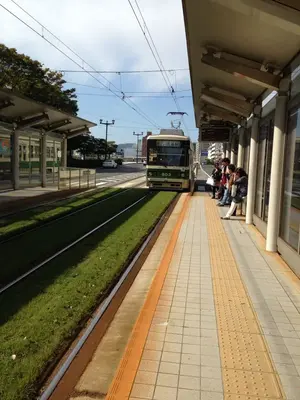
It was here right in front of the Dome that my hubby turned to me and said 'where's my bag'. His bag, which held our passports, was still on the tram, on the luggage rack, above the seats, where he had left it. We rushed back to the station, which is really just a fenced off area where the trams stop for passengers to alight to find another tram just pulling in.
So many horrible things were going through both our heads as we tried to explain to the tram driver (who didn't speak a word of english) what we had done. We discovered that sign language really is a universal language as I pointed to my bag and the racks. Thank goodness he understood us, got off the train and used a phone which we hadn't even seen to call what we assume was their office (there is a phone at each of these stations).
He then pointed to the ground in front of us and then at us and held up his fingers. We were to wait there for 10 minutes, what for, we didn't know. He then of course got back on his tram and left. Within 10 minutes another man arrived out of nowhere and came to us......we went through the same gestures, this time coming up with 20 minutes.
Yet another man joined him and they both spoke to someone else using the same phone. Within 20 minutes a car pulled up from which another man alighted carrying our bag.
Words cannot describe how grateful we were to all these people who had gone out of their way to help us. To think of all that must have taken place to bring our bag to us is simply amazing. The fact that our bag was still even on that tram and had not already been stolen is another astonishing thing. This truly showed us the nature of the Japanese people.....where else in the world could this happen in this day and age.
Hiroshima Bomb Dome (formerly the Genbaku Dome)
At 8.15 am August 6, 1945 a B29 bomber carried out the World's first atomic bombing. The bomb exploded approximately 600 metres above and 160 metres southeast of the Hiroshima Prefectural Industrial Promotions Hall, ripping through and igniting the building, instantly killing everyone in it.
Because the blast struck almost directly above, some of the centre walls remained standing, leaving enough of the building and iron frame to be recognisable as a dome.
After the war, these dramatic remains came to be known as the A-bomb Dome.
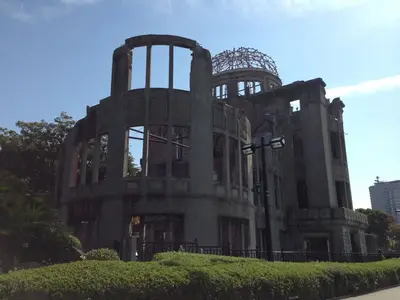
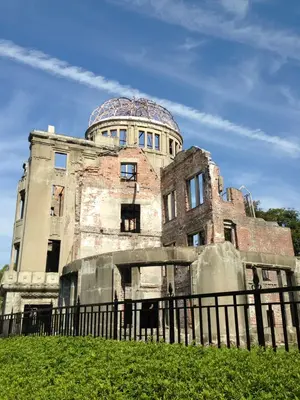
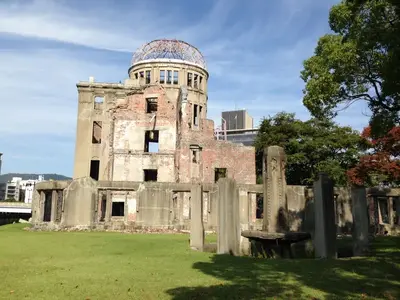
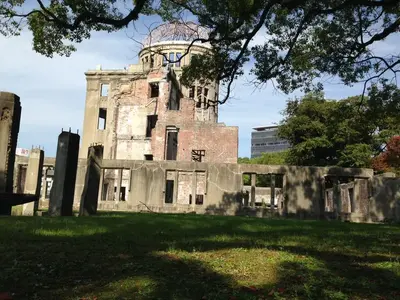

The Dome is a very special place to visit, a poignant place to sit and wonder at the destruction and loss of life that took place here so long ago. The building itself is eerie and has been diligently kept in much the same condition as the day the bomb detonated. We circled the building as everyone does, reading the many plaques telling the history of the Dome.
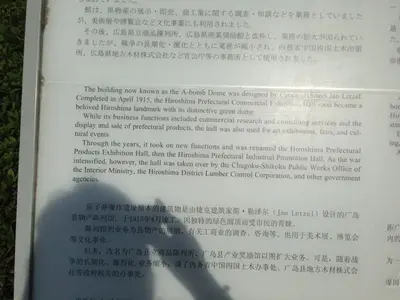
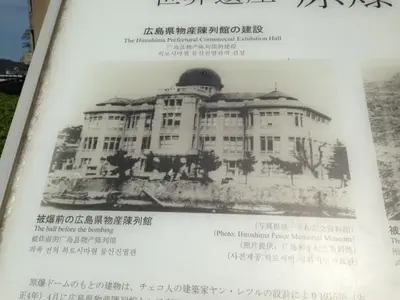
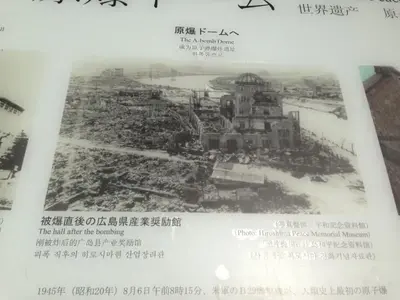
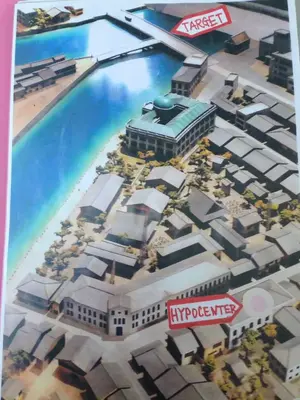
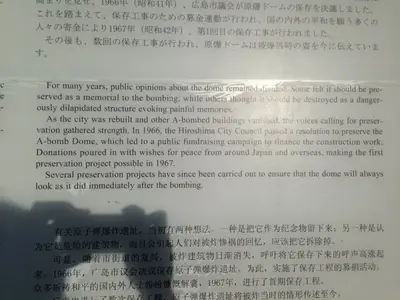
Directly across the Motoyasu-Gawain River from the A-bomb Dome is the Hiroshima Peace Memorial Park which is one of the most prominent features of this city. To reach the park you cross the 'T' shaped Aioi Bridge which was the main target for the bombing as it was easily recognisable from the air. The bridge was not destroyed but did sustain heavy damage and was rebuilt after the war and remained in service for almost four decades before being replaced with a new 'replica' bridge.
This area was once the political and commercial heart of the city and why it was chosen as the target. It was not until 4 years after the dropping of the bomb that it was decided that this area should be developed into a lasting Peace Memorial facility.
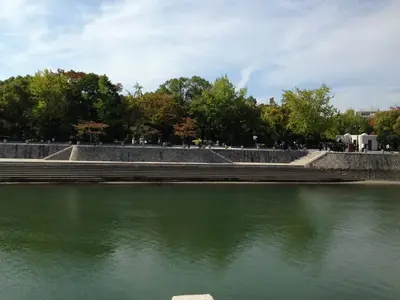
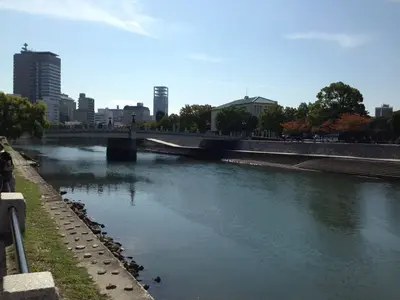
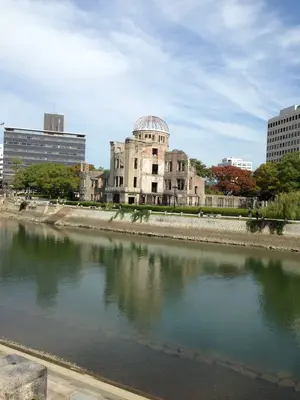
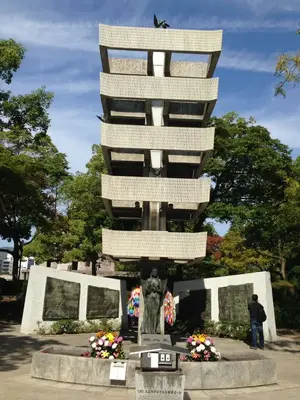
There are many buildings and Memorials which form part of this Park. The main facility being the Peace Memorial Museum which is dedicated to the events of that August day.
Between the museum and the A - bomb Dome and near the centre of the park is the Cenotaph for the A Bomb Victims. It is an arched shaped house symbolising the 'sheltering of Souls' for those who died on that day or from exposure to radiation immediately afterwards. Below this arch is a stone chest which holds a list of the names of all who perished in this event......of which there are over 220,000 names. There is also a plaque in Japanese which translates to:-
Let all the souls here rest in peace for we shall not repeat the evil.
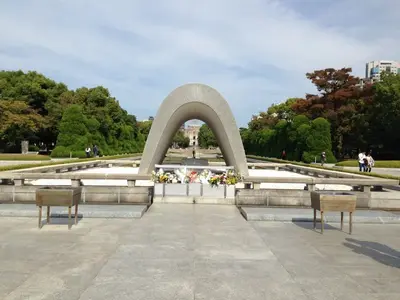
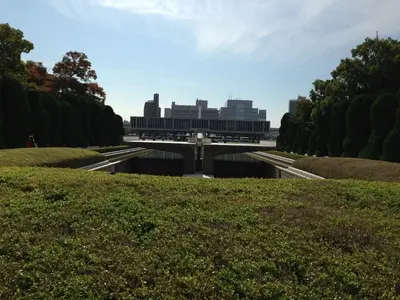
You will notice looking directly through this Arch and over the Pond of Peace, the A-bomb Dome is perfectly aligned. Looking back in the opposite direction the Arch aligns perfectly again with the Peace Flame. This flame has burnt continuously since it was lit in 1964. It will remain lit until all nuclear bombs on the planet are destroyed and the planet is free from the threat of nuclear annihilation.
Children's Peace Monument
The first thing you notice when viewing this monument are the display cases in a semi circle behind it. They are filled with origami cranes, thousand upon thousands of them in beautiful bright colours.
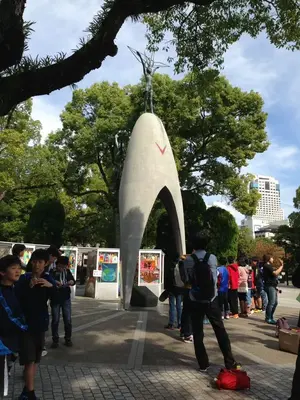
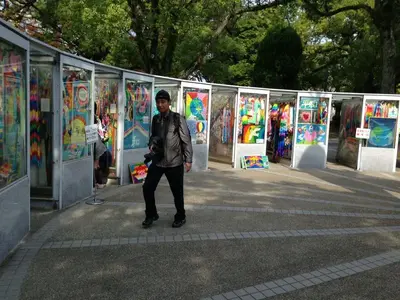
This monument was built to commemorate the thousands of children who lost their lives through the bomb and in particular a little girl named Sadako Sasaki.
Sadako was 2 when she was exposed to the A bomb, she had no apparent injuries and grew up to be strong and healthy. At 11 years of age she fell ill with leukemia. She believed that folding paper cranes would help her recover and she kept folding them until her death some eight months later. It is ancient Japanese tradition that to those who fold one thousand cranes, one wish is granted. Sadly her wish was never granted but through her efforts the World heard of her story and the making of cranes began in earnest.
Her death was the catalyst behind building this monument and funds were raised by school children all over Japan. The cranes became a symbol of peace and some 10 million cranes are offered each year to the Children's Peace Monument on Children's Day.
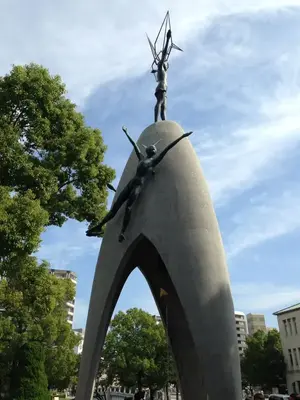
Sadako is immortalised on top of the monument holding a crane.
When we visited children were singing before the memorial and offering up thousands of colourful cranes they had bought with them.
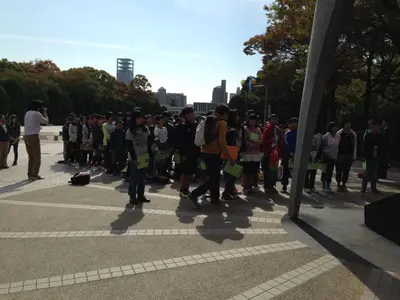
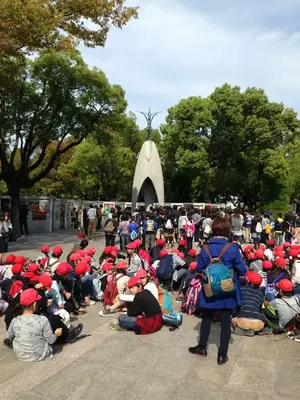
Peace Bell
There are 3 Peace Bells within Peace Park with the most significant one standing near the Children's Peace Monument. It is a beautiful large bell which has a World map with no boundaries inscribed on it symbolising One World. To ring it you pull back on a wooden log.....the area where the log hits the bell shows the atomic energy symbol, expressing hope that all atomic and hydrogen bombs be abolished. On the opposite side of the bell is a mirror to reflect the heart of the person who rings the bell. The bell was built as a spiritual symbol with the hope that the bell will resound in each corner of the World and reach the hearts of every human being.
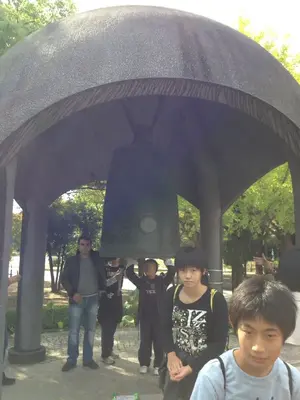
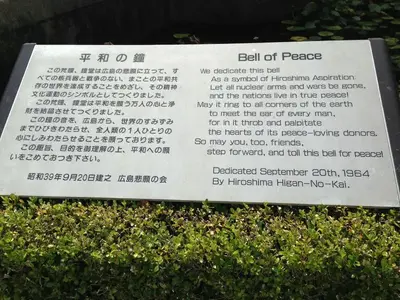
Surrounding the bell is a pond in which lotus seeds have been planted. Lotus leaves were placed on people's wounds to reduce the pain of the burns in the aftermath of the bomb. Each year at the time of Peace Memorial Day these flowers bloom as if to remind everyone of the part they played on that tragic day. Everyone is encouraged to ring the bell......and you will find many waiting to do just this.
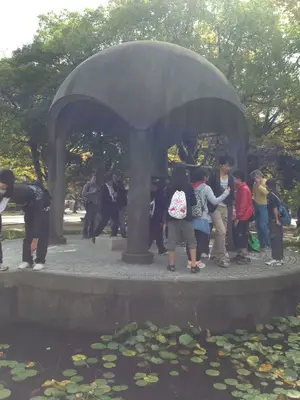
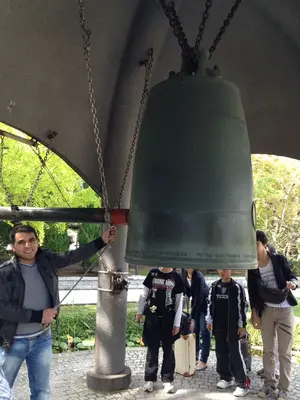
There is an Atomic Bomb Memorial Mound surrounded by a small fence. It is a large grass covered mound which is said to contain the ashes of 70,000 unidentified victims.
Sorry, no photos of this.....it just didn't seem right.
National Peace Memorial Hall
This hall was built in 2002 to mourn the atomic bomb victims. There is another of these Halls in Nagasaki for the same purpose.
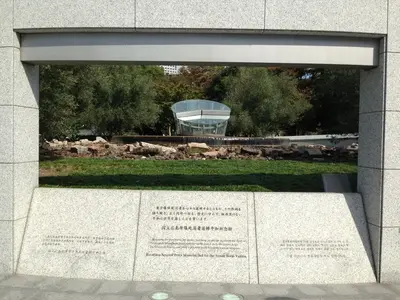
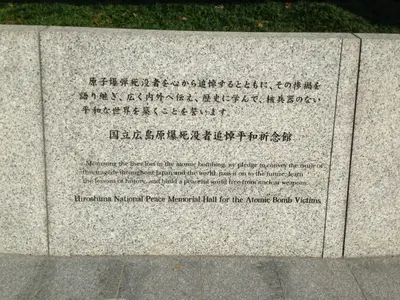
Here they are collecting the stories from the survivors of the victims. They are collecting the names and photographs of these victims in order to build a reservoir of memories in order to mourn their loss.
We were fortunate to meet a survivor of this day.....his mother was 5 months pregnant with him when the bomb was dropped.....she was very fortunate to have been away visiting relatives but came the next day to witness for herself what had happened. She also eventually died of a form of cancer years later. His father and grandfather were killed instantly when the bomb exploded. He himself has suffered ill health all his life and now spends his time telling others of what transpired that day.
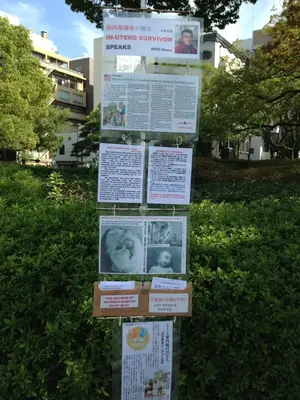
He asked us to sign his Visitors book and asked our Nationality, when we told him Australian, he broke into a smile as he opened his book to show us that of all the many thousands of people he had spoken to, Australians numbered the largest. We found this heartwarming on an otherwise sad and heart searching day.
Miyajima
Miyajima is a small island a short trip outside Hiroshima. It is considered one of the most scenic spots in Japan and is famous for its Shrines and Temples and more so for it's giant Tori Gates which appear to float when the tide is full. It's traditional name is Itsukushima but is commonly referred to as Miyajima (Shrine Island). It is a beautiful, island with so much to see and do and many will stay the night in a Ryokan (traditional Japanese Lodging).
There are also many deer here, which was delightful to see again. Where we were able to buy wafers to feed the deer in Nara, it has been banned here to keep the numbers in check so watch out for any food you have as they are even more forthright and sneaky trying to get into your bags for food and yes, I got nabbed yet again!
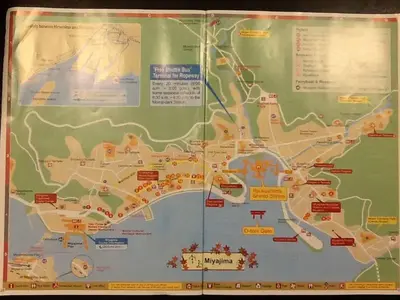
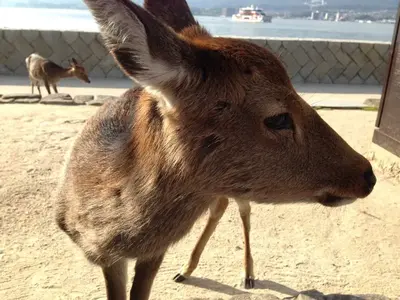
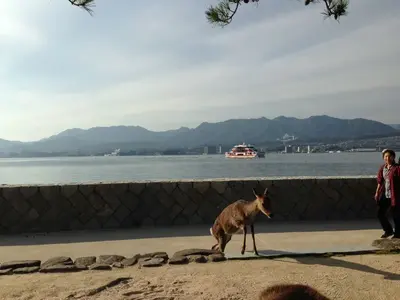
The island is the most famous of Japan's many islands and is the only one that is a World Cultural Heritage Site. It has been considered a Holy place through most of it's history.
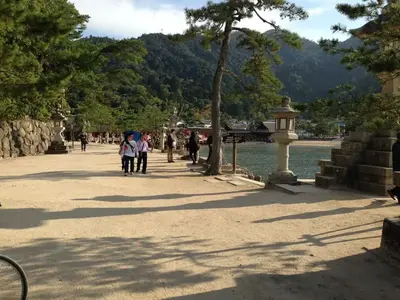
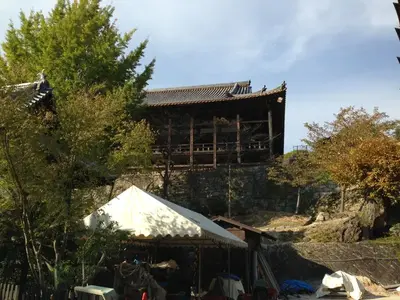
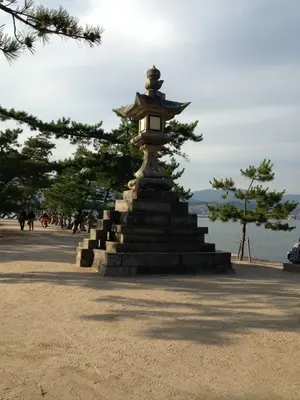
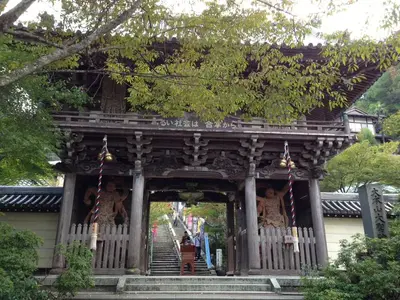
Women once were not allowed on the island and old infirm people were shipped elsewhere to die so that the ritual purity of the island would not be spoiled.
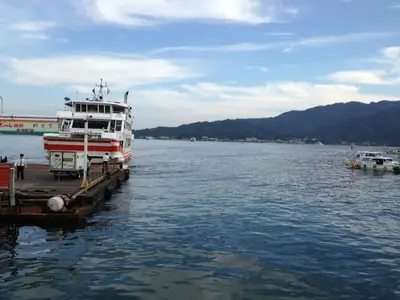
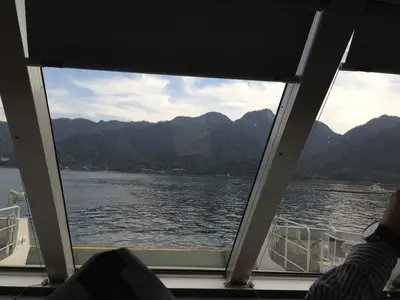
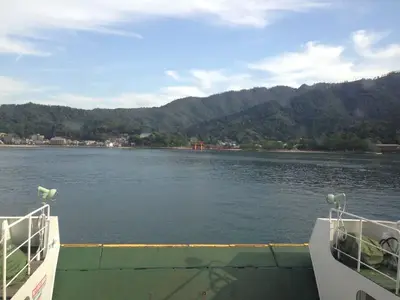
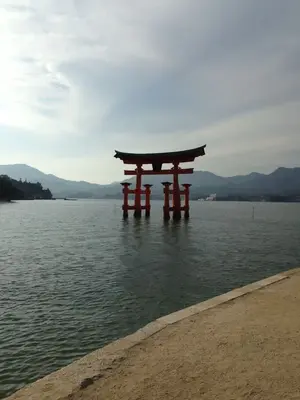
It is a short train ride (approx 26 minutes) from Hiroshima from where you connect with a ferry to the island. Alternatively, the trams available beside the train station also service this area and although the trip is more scenic, it does takes much longer.
Bicyles are for hire at the Ferry terminal and hubby and I thought we'd have a go much to the amusement of many Japanese who are very proficient riders. But it is a fun way to get around the island to see the many attractions. We weren't too good on the many hilly areas though.

There are many many souvenir shops which do mostly sell the same wares and at the same price. What you will find many of is rice scoops and you will come upon the Worlds largest rice scoop/spatula at over 5 metres long.

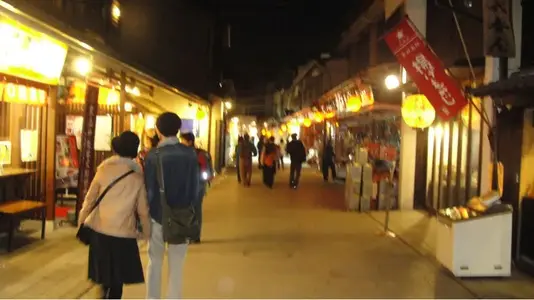
There are many little restaurants and vendors selling food....if you like seafood, this is the place to be. They are well known for their fresh grilled oysters and you just have to try Momiji Manjū. A small cake in the shape of a maple leaf which traditionally has sweet bean paste within them, but cheese, chocolate, custard and other variations are available. You will see them making these cakes at the front of a few shops.
You can also buy these cakes fried (Age Momji). The outside becomes crispy and the inside very soft and sweet....truly delicious!
Itsukushima Shrine is Miyajima's key Shrine and is also referred to as The Floating Shrine on the Sea. It was said to be built in 593 and is a large red lacquered complex of many halls and pathways and was built on stilts so that commoners could visit the site without defiling the island with their footsteps. It is a UNESCO World Heritage Site.
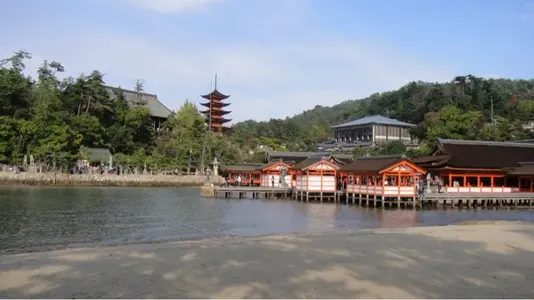
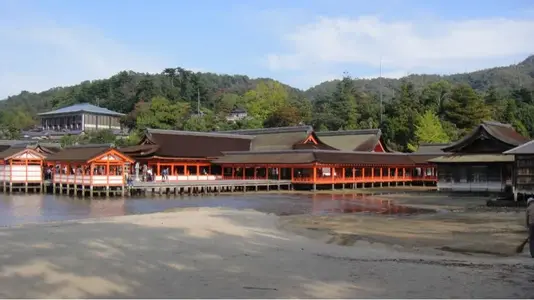
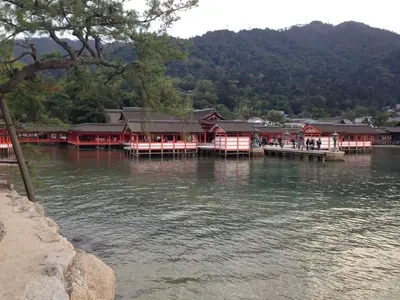
The O-Torii Gate
The Tori Gates of Itsukushima Shrine are designated as a National Important Cultural Property and is probably the most recognised symbol of Japan. The present O-Torii is the eighth since the Heian period and were erected in 1875. They are approximately 16.6 metres in height and weigh about 60 tons. The main pillars are of natural camphor with the four supporting pillars being made of cedar. The top rail of the tori has a hollow space and stones the size of your fist have been inserted to add more weight to the gate itself. The gate is just sitting on the sea floor under its own weight. It's best to view the Gates at high tide to see the full effect of them floating.
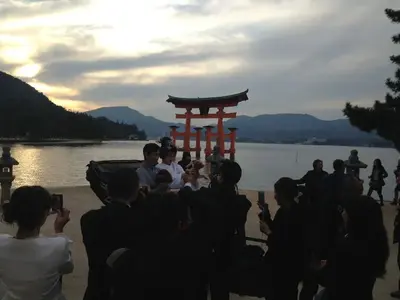
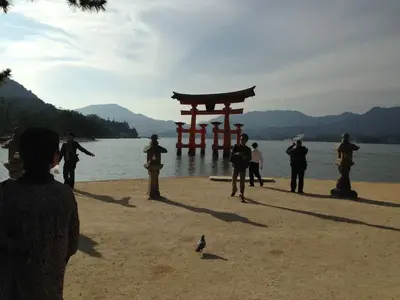
Five Storied Pagoda
Said to have been built in 1407 and is 28 metres high and combines the Japanese and Chinese styles of Arrchitecture.
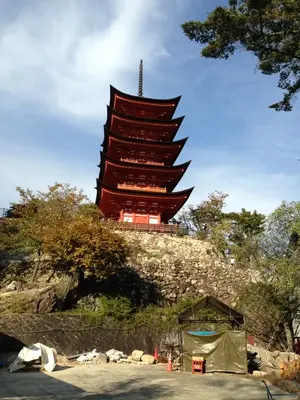
There is just so much to see on this island whether it be the Shrines and Temples or just the landscape which was just beautiful.
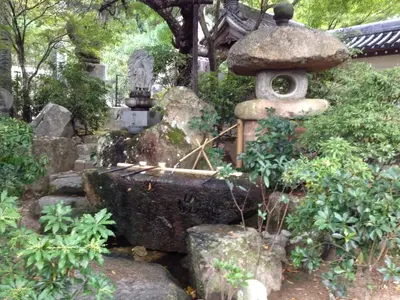
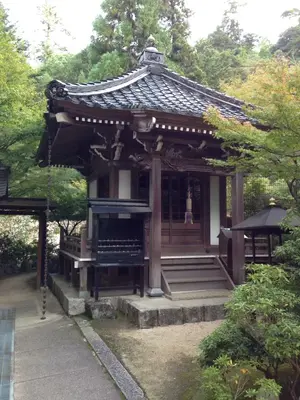
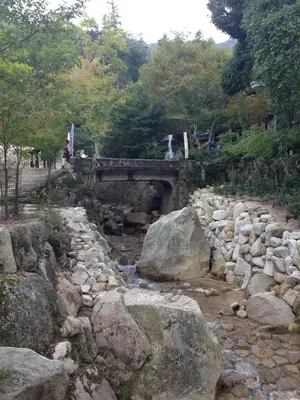
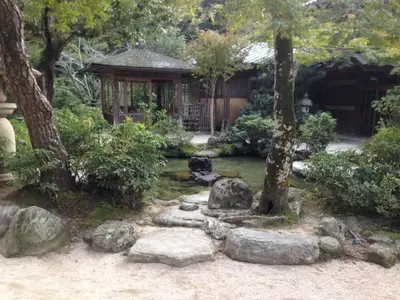
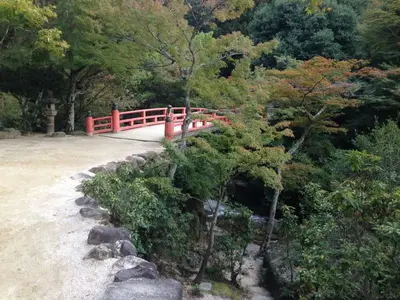
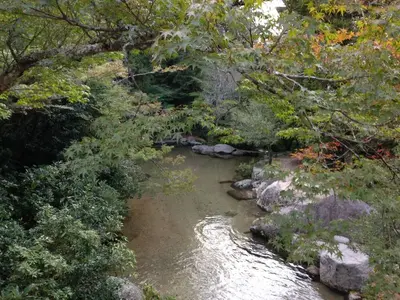
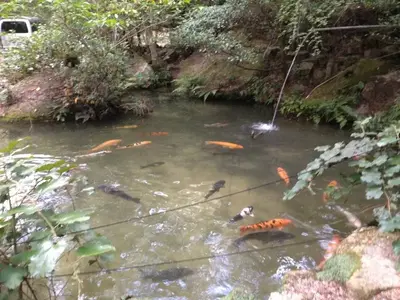
Mt Misen
The highest mountain on Miyajima and covered with pristine primeval forests and rises 535 metres above sea level. It is regarded as sacred and an object of worship itself since ancient times. Near the summit you will find Temples relating to Buddhist worship. Many like to hike up this mountain and there is also a Ropeway (Cable Car) which you can take almost to the summit. Its a 2 leg journey of connecting cable cars. It's well worth the trip to see stunningly beautiful views over the Seto Inland Sea from a few vantage points. There are trails which will take you to the summit.
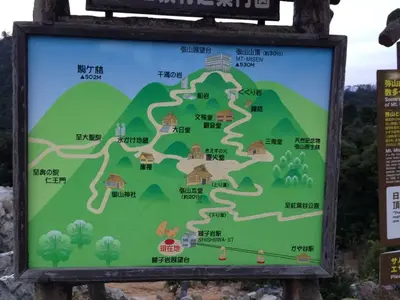
There are mini buses which you can catch to the start of the Ropeways. We decided to walk, not a good decision as it's mostly all uphill. We even had to run the last 50 metres so that we could make the last Cable car up the mountain.
We wished we had taken the journey up the mountain much earlier to get the most of the views but at any time of the day it is well worth it. The last car comes down at 5.45, if you miss it, you are left on the mountain all night which I definitely would not recommend. It gets pitch black up there and is very steep, there is also a community of monkeys which roam the mountain and are still considered wild. If you do encounter any of these monkeys, mind your belongings and do not look at them directly.....this will be seen as an aggressive act.....at the very least they will scare the bejesus out of you with a big fanged snarl!
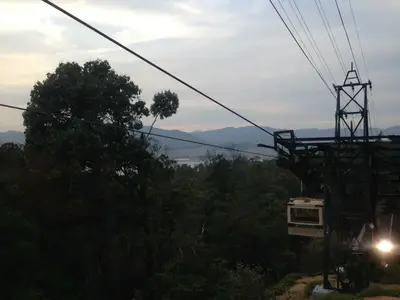
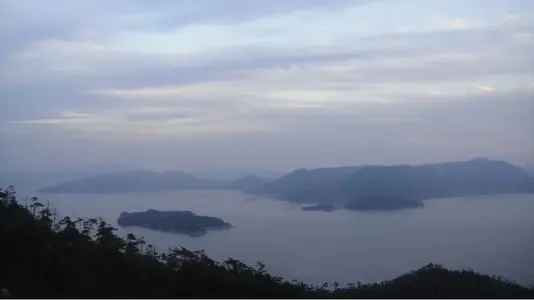
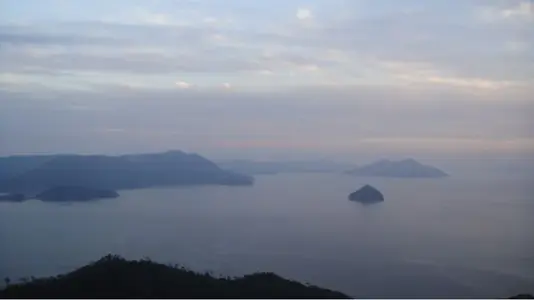
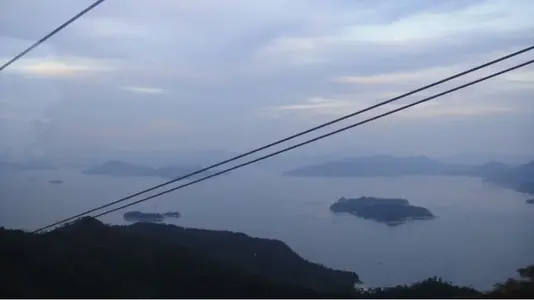
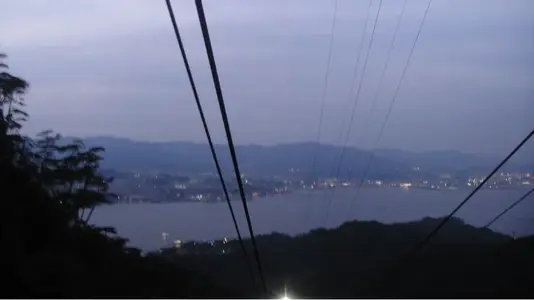
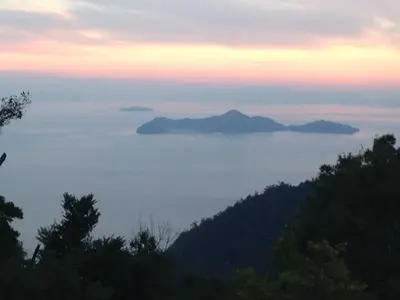


Peace Pagoda, Hiroshima
A Peace Pagoda is a Buddhist stupa, a monument to inspire peace. Most Peace Pagodas built since the end of World War II have been built under the guidance of Nichidatsu Fuji who was greatly inspired from having met Mahatma Gandhi. He began building Peace Pagodas as shrines to World peace in 1947. By the year 2000 over 80 of these Pagodas had been built all over the world in Europe, Asia and the United States.
The Peace Pagoda as seen from our Hotel room.
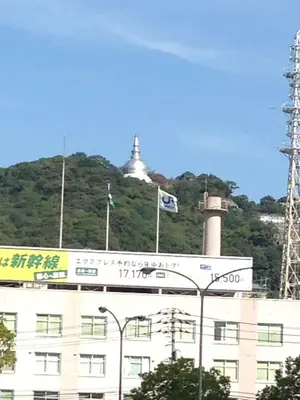
Our next top is Hakone which is a wonderful town from where, if you're lucky, you can view Mt Fuji.
References: Site Brochures, Japan Guide

